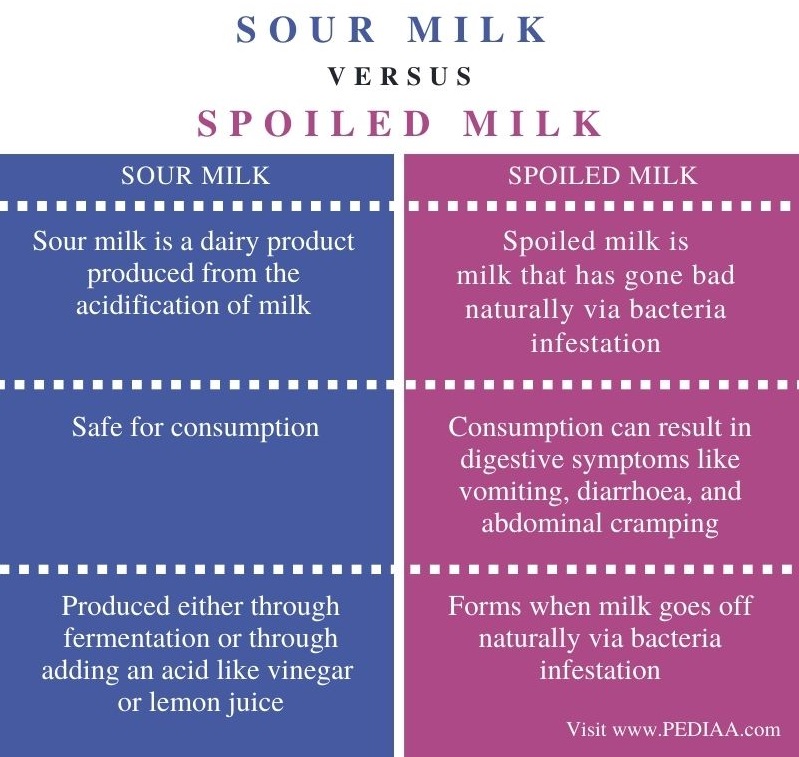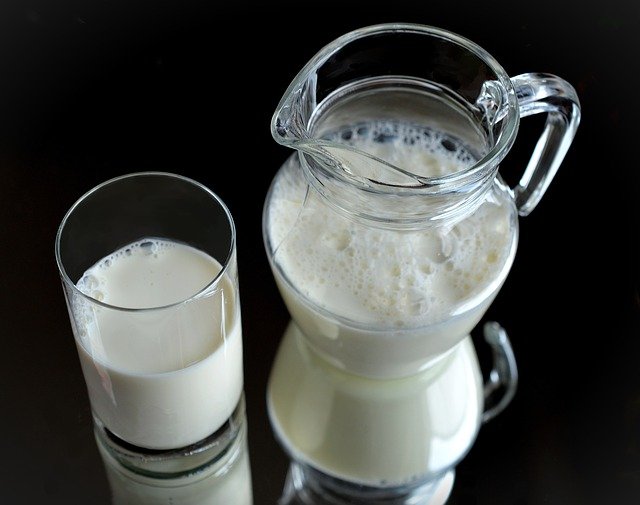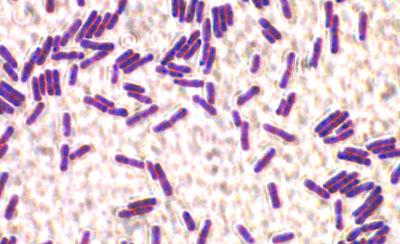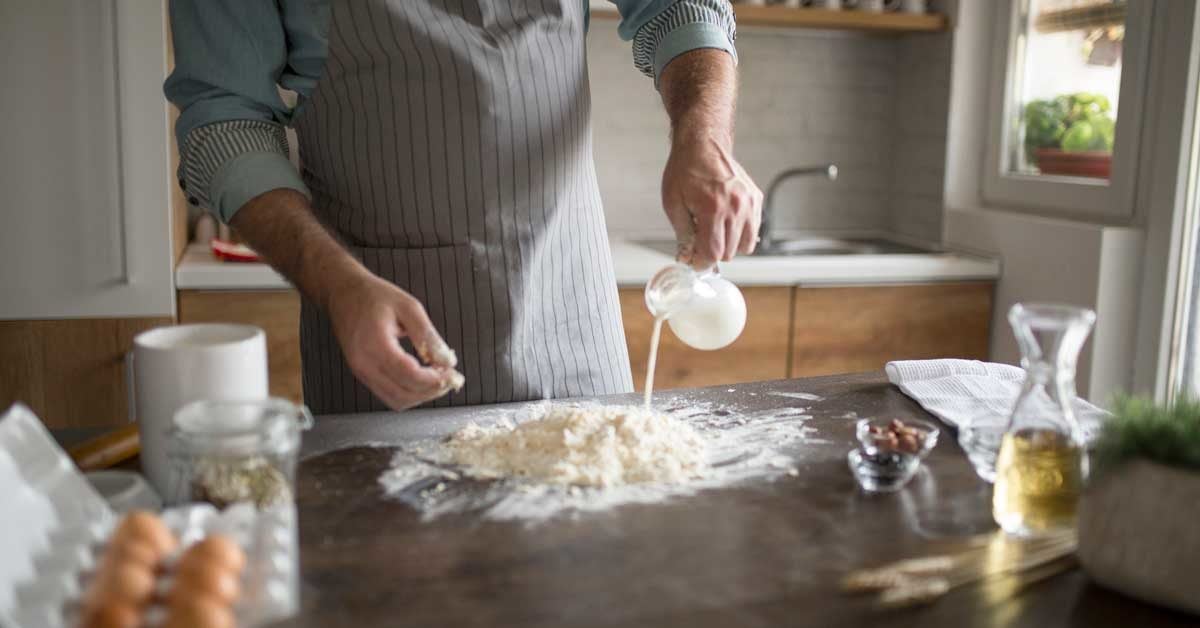Bacteria in spoiled milk
Bacteria In Spoiled Milk. Using your slightly spoiled milk in innovative ways can also help you reduce food waste. In the warm space the bacteria will multiply making the acid turn sour. Milk undergoes heat treatment – pasteurization – to kill off microbes that can cause food spoilage. Today milk is more frequently spoiled by aerobic sporeformers such as Bacillus whose proteolytic enzymes cause curdling.
 Spoliedmilkfordays Instagram Posts Gramho Com From gramho.com
Spoliedmilkfordays Instagram Posts Gramho Com From gramho.com
In the warm space the bacteria will multiply making the acid turn sour. Immediately the bacteria act on the milk. It begins to sour and eventually spoils. Milk undergoes heat treatment – pasteurization – to kill off microbes that can cause food spoilage. Perolens Alteromonas nigrifaciens Shewanella putrefaciens Brochothrix thermosphacta and B. Most psychrotrophs are destroyed by pasteurization temperatures however some like Pseudomonas fluorescens Pseudomonas fragi can produce proteolytic and lipolytic extracellular enzymes which are heat stable and capable of causing spoilage.
Light can also contribute to the spoiling of dairy.
Our days of crying over spoiled milk could be over thanks to Cornell food scientists. It performs better when within the cold temperature and can develop on the milk while in the refrigerator. Much like spoiled milk the fermentation of raw milk occurs due to various species of lactic-acid-forming bacteria a small percentage of which are. In the warm space the bacteria will multiply making the acid turn sour. Raw milk pasteurized milk cheese and other dairy products support different and diverse groups of microorganisms which can cause product spoilage. What kind of bacteria is in spoiled milk.
 Source: medium.com
Source: medium.com
One reason for this is if milk is not left cold and left in a warm area. Cold milk storage and transport selects for psychrotrophic bacteria which are often proteolytic and lipolytic. It performs better when within the cold temperature and can develop on the milk while in the refrigerator. Immediately the bacteria act on the milk. It is formed because the bacteria in the milk changes the milk to sugar acid.
 Source: discoveryexpresskids.com
Source: discoveryexpresskids.com
Our days of crying over spoiled milk could be over thanks to food scientists. Raw milk pasteurized milk cheese and other dairy products support different and diverse groups of microorganisms which can cause product spoilage. Gram stain showing Paenibacillus a spore-forming bacteria that can cause off-flavors in a variety of foods and curdling in dairy products. Common psychrotrophic bacteria in milk are species of Micrococci Bacilli Staphyloccoci Lactobacilli Pseudomonas and coliforms. One reason for this is if milk is not left cold and left in a warm area.
 Source: pediaa.com
Source: pediaa.com
Our days of crying over spoiled milk could be over thanks to Cornell food scientists. Drinking it may make you sick but cooking with it wont as long as its just a little off. In milk the microorganisms that are principally involved in spoilage are psychrotrophic organisms. Campestris Photobacterium phosphorous Aeromonas hydrophila and A. A small sip of spoiled milk is unlikely to cause symptoms beyond a bad taste.
 Source: quora.com
Source: quora.com
Add a definite quantity of methylene blue to 10 ml of milk. Using your slightly spoiled milk in innovative ways can also help you reduce food waste. Milks combination of water fats proteins and vitamins allows for the growth of a variety of bacteria especially psychrotrophic bacteria that are able to grow under cold conditions. It performs better when within the cold temperature and can develop on the milk while in the refrigerator. At room temperature the main spoilage-causing organisms are Corynebacterium Bacillus Micrococcus Lactobacillus and Staphylococcus.
 Source: dreamstime.com
Source: dreamstime.com
Immediately the bacteria act on the milk. In the past milk was usually soured by LAB such as enterococci lactococci or lactobacilli which dropped the pH to 45 where milk proteins coagulate curdling. Gram stain showing Paenibacillus a spore-forming bacteria that can cause off-flavors in a variety of foods and curdling in dairy products. In simple words an increase in the number of bacterial flora will reduce the colour of methylene blue more rapidly due to the consumption of oxygen. In milk the microorganisms that are principally involved in spoilage are psychrotrophic organisms.
 Source: pediaa.com
Source: pediaa.com
A small sip of spoiled milk is unlikely to cause symptoms beyond a bad taste. Salmonicida and finally some lactic acid bacteria which can be associated to the storage of fish especially in vacuum or modified. Our days of crying over spoiled milk could be over thanks to food scientists. Our days of crying over spoiled milk could be over thanks to Cornell food scientists. Cooled milk is used for the production of cream so psychrotrophic bacteria are the main causes of spoilage are caused by Pseudomonas Alcaligenes Acinetobacter Aeromonas and Achromobacter.
 Source: missouripoisoncenter.org
Source: missouripoisoncenter.org
Gram stain showing Paenibacillus a spore-forming bacteria that can cause off-flavors in a variety of foods and curdling in dairy products. It is formed because the bacteria in the milk changes the milk to sugar acid. Our days of crying over spoiled milk could be over thanks to food scientists. Keeping milk continuously refrigerated and sealing the container well after each use will help to keep milk fresh for up to a week past the sell-by date on the package. A small sip of spoiled milk is unlikely to cause symptoms beyond a bad taste.
 Source: en.wikipedia.org
Source: en.wikipedia.org
Common psychrotrophic bacteria in milk are species of Micrococci Bacilli Staphyloccoci Lactobacilli Pseudomonas and coliforms. One reason for this is if milk is not left cold and left in a warm area. In the warm space the bacteria will multiply making the acid turn sour. Immediately the bacteria act on the milk. The speed of reduction of methylene blue colour is directly proportional to the volume of bacteria present in the milk sample.
 Source: onlinelibrary.wiley.com
Source: onlinelibrary.wiley.com
Cold milk storage and transport selects for psychrotrophic bacteria which are often proteolytic and lipolytic. Immediately the bacteria act on the milk. This is mainly due to bacterial growth resulting in spoilage of raw milk which will eventually reduce the pH of the milk as a result of lactic acid production by lactic acid bacteria Lu et al. At room temperature the main spoilage-causing organisms are Corynebacterium Bacillus Micrococcus Lactobacillus and Staphylococcus. Gram stain showing Paenibacillus a spore-forming bacteria that can cause off-flavors in a variety of foods and curdling in dairy products.
 Source: labmanager.com
Source: labmanager.com
Milk curdles in part because of bacteria he says. In milk the microorganisms that are principally involved in spoilage are psychrotrophic organisms. Immediately the bacteria act on the milk. What kind of bacteria is in spoiled milk. Even if milk is pasteurized theres still a certain amount of milk bacteria left behind that will eventually cause the milk to spoil and.
 Source: news.cornell.edu
Source: news.cornell.edu
It is formed because the bacteria in the milk changes the milk to sugar acid. Drinking it may make you sick but cooking with it wont as long as its just a little off. In simple words an increase in the number of bacterial flora will reduce the colour of methylene blue more rapidly due to the consumption of oxygen. This is mainly due to bacterial growth resulting in spoilage of raw milk which will eventually reduce the pH of the milk as a result of lactic acid production by lactic acid bacteria Lu et al. In milk the microorganisms that are principally involved in spoilage are psychrotrophic organisms.

Psychrophilic is a kind of bacteria that is known to duel in cold temperatures. The sugar present in milk lactose allows bacteria to grow and multiply which will lead to spoiling. This is mainly due to bacterial growth resulting in spoilage of raw milk which will eventually reduce the pH of the milk as a result of lactic acid production by lactic acid bacteria Lu et al. Milk undergoes heat treatment – pasteurization – to kill off microbes that can cause food spoilage. Light can also contribute to the spoiling of dairy.
 Source: octopusgourmet.wordpress.com
Source: octopusgourmet.wordpress.com
Much like spoiled milk the fermentation of raw milk occurs due to various species of lactic-acid-forming bacteria a small percentage of which are. In milk the microorganisms that are principally involved in spoilage are psychrotrophic organisms. The most common seafood spoilage bacteria include the Pseudomonas fluorescens P. It performs better when within the cold temperature and can develop on the milk while in the refrigerator. Salmonicida and finally some lactic acid bacteria which can be associated to the storage of fish especially in vacuum or modified.
 Source: gramho.com
Source: gramho.com
Spoiled milk is the result of an overgrowth of bacteria that causes changes in taste smell and texture. The sugar present in milk lactose allows bacteria to grow and multiply which will lead to spoiling. It is formed because the bacteria in the milk changes the milk to sugar acid. In the warm space the bacteria will multiply making the acid turn sour. Pasteurized fluid milk spoiled by a variety of bacteria yeasts and molds.
 Source: healthline.com
Source: healthline.com
A small sip of spoiled milk is unlikely to cause symptoms beyond a bad taste. Spoiled milk is the result of an overgrowth of bacteria that causes changes in taste smell and texture. Common psychrotrophic bacteria in milk are species of Micrococci Bacilli Staphyloccoci Lactobacilli Pseudomonas and coliforms. It begins to sour and eventually spoils. It performs better when within the cold temperature and can develop on the milk while in the refrigerator.
If you find this site adventageous, please support us by sharing this posts to your preference social media accounts like Facebook, Instagram and so on or you can also bookmark this blog page with the title bacteria in spoiled milk by using Ctrl + D for devices a laptop with a Windows operating system or Command + D for laptops with an Apple operating system. If you use a smartphone, you can also use the drawer menu of the browser you are using. Whether it’s a Windows, Mac, iOS or Android operating system, you will still be able to bookmark this website.





